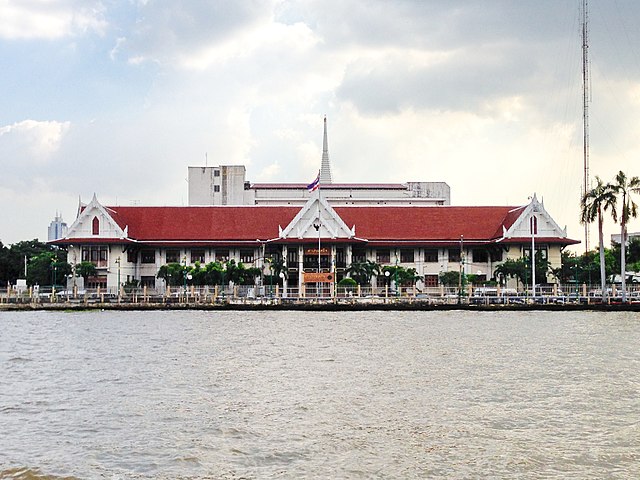The Thonburi Kingdom was a major Siamese kingdom which existed in Southeast Asia from 1767 to 1782, centered around the city of Thonburi, in Siam or present-day Thailand. The kingdom was founded by Taksin the Great, who reunited Siam following the collapse of the Ayutthaya Kingdom, which saw the country separate into five warring regional states. The Thonburi Kingdom oversaw the rapid reunification and reestablishment of Siam as a preeminient military power within mainland Southeast Asia, overseeing the country's expansion to its greatest territorial extent up to that point in its history, incorporating Lan Na, the Laotian kingdoms, and Cambodia under the Siamese sphere of influence.
Journey of Phraya Tak from Ayutthaya to Chanthaburi and his return to reconquer Ayutthaya in 1767, according to traditional Thai historiography.
Taksin's coronation at Thonburi (Bangkok), 28 Dec 1767
Siamese invasion of Cambodia and Hà Tiên in 1771 and Vietnamese counter-offensives in 1772.
Kawila of Lampang, vassal lord of Lampang to Taksin and the first two Chakri monarchs, helped to repopulate Lan Na in the late 18th-early 19th centuries
Thonburi is an area of modern Bangkok. During the era of the Kingdom of Ayutthaya, its location on the right (west) bank at the mouth of the Chao Phraya River had made it an important garrison town, which is reflected in its name: thon (ธน) a loanword from Pali dhána 'wealth', and buri (บุรี), from púra, 'fortress'. The full formal name was Thon Buri Si Mahasamut. For the informal name, see the history of Bangkok under Ayutthaya.
Three Thai-style pavilions adjacent to each other in front of Wat Prayurawongsawat rim Chao Phraya River (opposite Yodpiman River Walk), now head office of City Law Enforcement Department, BMA (formerly Thonburi Provincial Hall)





